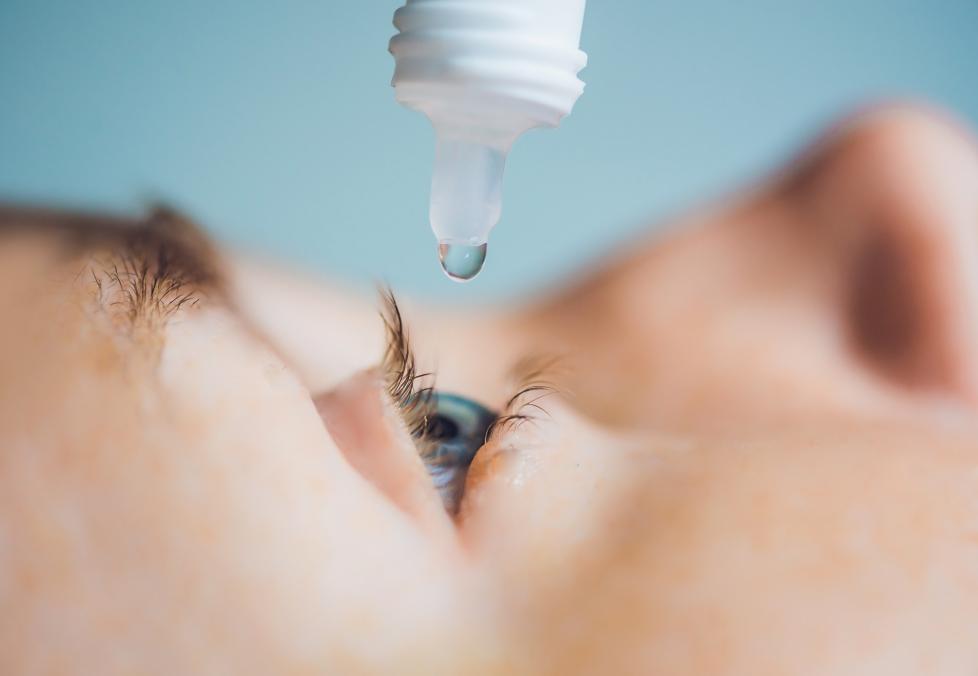
We accept thousands of plans!
Everything you need to know to take care of your eyes — for life.
Don’t tough it out. Take control of treating dry eye symptoms with these expert strategies.

The floodgates don’t just open during Titanic reruns. Your body is constantly cranking out tears—they’re actually a key player in your eye health.
Think about chugging a sports drink after a hard workout. Each sip makes you feel a little more like your normal self. That’s what tears do for dry eyes—each drop holds important nutrients and antibodies that keep the eye nourished and well-hydrated, which in turn helps fend off irritants and infections.
When something goes awry with tear production, though, the consequences can stack up. Itchy or stinging eyes. Heavy eyelids. Redness. Blurry vision. The sensation that something’s lodged in your eye.
These are all common complaints of people with what’s known as dry eye syndrome, and they’re not something to simply shrug off, says Robert Africano, O.D., an optometrist with North Carolina Primary Vision Care Associates in Charlotte, N.C., located inside an America’s Best Contacts & Eyeglasses.
“Dry eye isn’t just uncomfortable,” he says. “It can affect vision and interfere with quality of life.”
There are three layers to every tear: an outer, oily layer; a middle, watery layer; and an inner layer made of mucus. If there are deficiencies in any of the three layers, the tears may evaporate too quickly, or they may not spread evenly.
Lots of things can lead to dry eye, says Dr. Africano, including eye allergies, health problems like diabetes or rheumatoid arthritis, and medications like decongestants and those for high blood pressure, anxiety, and hormone replacement therapy.
Your age and gender play a role too. Dry eye is much more common among people older than 50, since tear production naturally slows as we age. And women are more likely to suffer, due to hormonal changes.
The American Academy of Ophthalmologists estimates that 3.2 million women and 1.7 million men age 50 and older have a chronic dry eye condition.
The good news: Most cases can be controlled with a combination of the following DIY strategies. But because dry eye has so many different triggers and symptoms, Dr. Africano adds that it’s never a bad idea to see your optometrist.
“It’s good to get to the root of your problem,” he says, “so we can find the best way to bring you some relief.”

We accept thousands of plans!
Cigarette smoke, smog, windy days, and bright sunshine can all aggravate your already dry eyes. A good pair of sunglasses can help block the wind and sun. Whenever possible, limit your exposure to secondhand smoke and smog.
Other environmental triggers to be aware of: recycled air on airplanes, and being in the direct line of a blowing air vent or fan. In both cases, keeping your eyes well lubricated can help ease the symptoms.
You can’t avoid every environmental trigger, but you can always be prepared. Artificial tears are a crucial tool to keep on hand. They’re safe to use multiple times a day, but Dr. Africano says it’s important to get your eye doctor’s recommendation about frequency and which over-the-counter drops are right for you.
Lubricating gels, which are a thicker, ultra-moisturizing version of artificial tears, are another option. These are typically applied right before bedtime or on days when your eyes feel particularly bothered. They’re available over the counter or with a prescription.
Just as dry air sucks moisture from your skin, it steals it from your eyes too. Running a humidifier in your home and office space can add moisture back into the air to lessen the effect.
If you live in or near a major city, use only high-quality air filters in your HVAC system to cut down air pollution within your home.
How do you judge quality? Look for a filter that meets one of these standards:
A study of U.S. veterans found that those living in and around major cities like New York and Chicago were a whopping three to four times more likely to have dry eye syndrome than those who lived in areas with less pollution.
Pressing a warm cloth to your eyelids either before bed or shortly after waking up encourages the meibomian glands to release natural oils that will improve the quality of your tears.
To make a warm compress, run a washcloth under hot water for 30 seconds. Let it cool slightly (test it on the inside of your wrist), wring, and lay over closed eyes for 10 to 15 minutes. Reheat cloth as desired. You can also gently massage your eyelids for a few minutes afterward for even greater relief.
Add dry eye relief to the long list of reasons to roll back the amount of time you spend with your tech toys.
If you stare at a computer at work, then come home and watch TV or spend time scrolling on your phone, your eyes aren’t receiving adequate rest. This is why you may feel “blurry-eyed” after staring at your phone for too long.
Aim to take hourly breaks from your screens. If you’re under a deadline, take a quick moment at your desk to close your eyes completely. Just a minute or two can make a big difference.